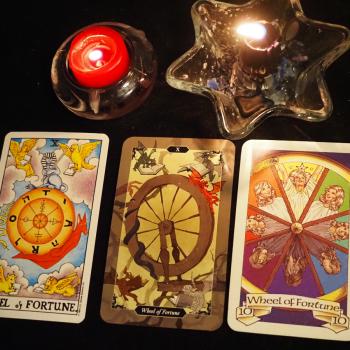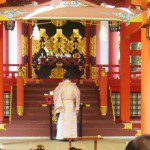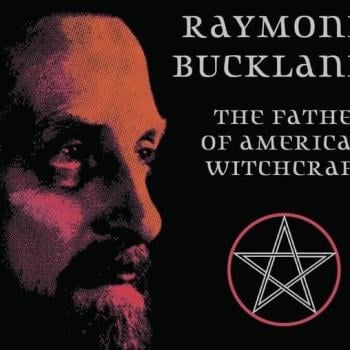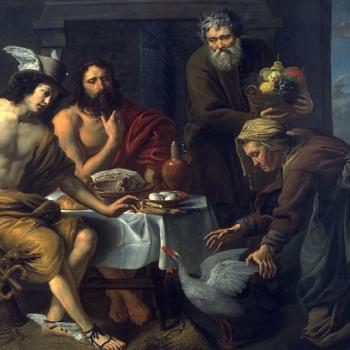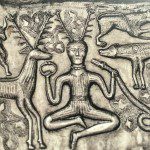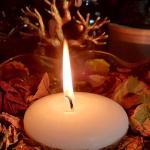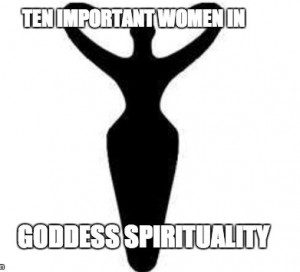 Last year I put together a few articles spotlighting the 25 Most Influential People in the Development of Modern Paganism. It was fun and was read by a lot of folks and even resulted in a few other similar lists. The original articles inspired a lot of comments too, mostly along the lines of “I can’t believe Person Y didn’t make your list!” Usually those criticisms were spot-on, I picked twenty-five folks but a credible case could be made for lots of people I left off my initial list.
Last year I put together a few articles spotlighting the 25 Most Influential People in the Development of Modern Paganism. It was fun and was read by a lot of folks and even resulted in a few other similar lists. The original articles inspired a lot of comments too, mostly along the lines of “I can’t believe Person Y didn’t make your list!” Usually those criticisms were spot-on, I picked twenty-five folks but a credible case could be made for lots of people I left off my initial list.
In order to fill in some of the gaps from that earlier project, and because I really like history, I’m running a feature over the next few weeks called “Ten Important ______.” This time around I’m focused on figures from Goddess Spirituality, last time it was last time it was 19th Century figures, and before that Witches and Druids. As of now I’ve only got one more of these planned and that’s on Heathenry, but one never knows. Other than the time involved in writhing these things (longer than an average blog post) and the extra work of tracking down pictures and inserting links (takes forever!) these lists are fun.
Out of all the entries in this series this particular article was both the hardest and easiest list to write. The easy part was finding ten individual worth writing about, in fact I had to narrow things down from an earlier list of thirty. It was difficult because I feel much like an interloper here. I certainly consider myself a Goddess worshipper, but I’ve never known what it’s like to be discriminated against due to my sex or to get paid less money than someone else for the same job. Many of the people in this list were not necessarily writing for me, but they’ve been an influence regardless, and an influence on much of the Pagan movement as a whole.
If someone were to ask me where Modern Paganism gets its “heart” I’d reply (without missing a beat) that it comes from the Goddess Spirituality first written about by people like Merlin Stone and Marija Gimbutas and then articulated so beautifully within a truly Witch-context by Starhawk*. It also comes from the political activism of early pioneers like Matilda Joslyn Gage and Annie Besant. Each built upon the other and now (to quote a favorite bumper sticker) the Goddess is alive and magick is afoot! While I will always think of The Goddess in terms of Witchcraft and Paganism, those spiritualities are not her only home. The Great Lady is arising anew in some Christian traditions and returning to a place of prominence in some Jewish ones.
As always with these lists it’s impossible to include everyone who truly deserves to be featured here. Hopefully reading about these powerful women leads to discovery of their peers and influences.
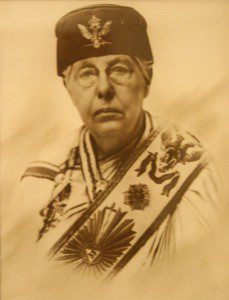 Annie Besant (1847-1933) It’s debatable whether or not Annie Besant actually worshipped The Goddess or any goddess at all, but I’ve always been such an admirer that I wanted to make sure she made at least one of my lists. This one seemed like a good fit. Besant is best known as the President of the Theosophical Society, one of the most influential groups ever in the history of the occult and the New Age movements. It was founded by Helena Blavatsky in 1875, Besant became President in 1907. Before leading the Theosophical Society Besant was a political activist, fighting for women’s rights and access to birth control. She was also a socialist and fought tirelessly to separate church and state. Besant was also a Co-Mason, which sometimes don’t sound all that groundbreaking in 2014 but was something else entirely in the early 20th Century. She was practicing magical ritual long before the rebirth of Witchcraft. Besant had an active pen and wrote numerous books and articles over her long life, many of them religious and spiritual in nature. Annie’s daughter Mabel Besant (1870-1952) went on to join The Rosicrucian Order Crotona Fellowship where she most likely met Gerald Gardner.
Annie Besant (1847-1933) It’s debatable whether or not Annie Besant actually worshipped The Goddess or any goddess at all, but I’ve always been such an admirer that I wanted to make sure she made at least one of my lists. This one seemed like a good fit. Besant is best known as the President of the Theosophical Society, one of the most influential groups ever in the history of the occult and the New Age movements. It was founded by Helena Blavatsky in 1875, Besant became President in 1907. Before leading the Theosophical Society Besant was a political activist, fighting for women’s rights and access to birth control. She was also a socialist and fought tirelessly to separate church and state. Besant was also a Co-Mason, which sometimes don’t sound all that groundbreaking in 2014 but was something else entirely in the early 20th Century. She was practicing magical ritual long before the rebirth of Witchcraft. Besant had an active pen and wrote numerous books and articles over her long life, many of them religious and spiritual in nature. Annie’s daughter Mabel Besant (1870-1952) went on to join The Rosicrucian Order Crotona Fellowship where she most likely met Gerald Gardner.
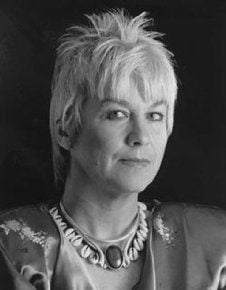 Z (Zsuzsanna) Budapest Z is one of the most important and influential Witches of the last 50 years. Anyone who has ever attended an open Witch circle has most likely chanted one of her songs (“We all come from the Goddess . . .”) but her influence extends far beyond that. She founded the first women’s only coven in modern history (The Susan B. Anthony Coven #1) and helped to turn Dianic Wicca into a growing and thriving movement. Budapest has been active in various social causes over the decades and helped to overturn California’s ban on on fortune telling, establishing her tradition as a valid religious path along the way. In recent years she has been a lightning rod for controversy, but often lost in those conversations is the huge role Z played in making Witchcraft a meaningful and spiritual choice for many women.
Z (Zsuzsanna) Budapest Z is one of the most important and influential Witches of the last 50 years. Anyone who has ever attended an open Witch circle has most likely chanted one of her songs (“We all come from the Goddess . . .”) but her influence extends far beyond that. She founded the first women’s only coven in modern history (The Susan B. Anthony Coven #1) and helped to turn Dianic Wicca into a growing and thriving movement. Budapest has been active in various social causes over the decades and helped to overturn California’s ban on on fortune telling, establishing her tradition as a valid religious path along the way. In recent years she has been a lightning rod for controversy, but often lost in those conversations is the huge role Z played in making Witchcraft a meaningful and spiritual choice for many women.
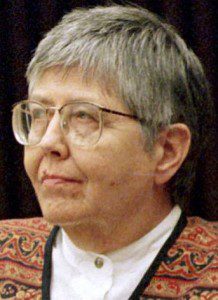 Mary Daly (1928-2010) Mary Daly was one of the premier feminist theologians in history and made several important contributions to Modern Paganism. Daly took the murdered witches of the Middle Ages and Renaissance and wrote about them not just as a part of an ancient paganism, but as traditional healers and midwives. This idea (and in many cases literal truth) has become a part of the Modern Witch mythos. Daly also fought to take back words with negative connotations such as “crone” and “hag,” turning them into positive words of empowerment for women beyond their “mother” years. Mary was the first tenured female professor of theology at Boston College (a Jesuit institution); tenure she was only granted after she was nearly dismissed due to her 1968 book The Church and the Second Sex which documented sexism in the Christian and Catholic tradition. There was a very spiritual component to Daly’s writing. In the 1990 re-release of Gyn/Ecology she wrote: ““Although I was not in a ‘trance’ when writing ‘Gyn/Ecology,’ I was in a special mode of creative consciousness, which stemmed, in part, from a will to overcome all phallocratically imposed fears and Move on the Journey of Gynocentric Creation.”
Mary Daly (1928-2010) Mary Daly was one of the premier feminist theologians in history and made several important contributions to Modern Paganism. Daly took the murdered witches of the Middle Ages and Renaissance and wrote about them not just as a part of an ancient paganism, but as traditional healers and midwives. This idea (and in many cases literal truth) has become a part of the Modern Witch mythos. Daly also fought to take back words with negative connotations such as “crone” and “hag,” turning them into positive words of empowerment for women beyond their “mother” years. Mary was the first tenured female professor of theology at Boston College (a Jesuit institution); tenure she was only granted after she was nearly dismissed due to her 1968 book The Church and the Second Sex which documented sexism in the Christian and Catholic tradition. There was a very spiritual component to Daly’s writing. In the 1990 re-release of Gyn/Ecology she wrote: ““Although I was not in a ‘trance’ when writing ‘Gyn/Ecology,’ I was in a special mode of creative consciousness, which stemmed, in part, from a will to overcome all phallocratically imposed fears and Move on the Journey of Gynocentric Creation.”
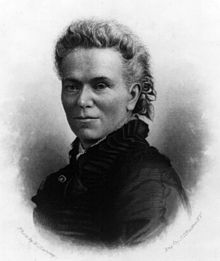 Matilda Joslyn Gage (1826-1898) Gage is a figure who has been mostly lost to the pages of history, but oh what a figure she was! She and her family were on the front lines of social change throughout the Nineteenth Century, the house she was born in served as a stop on the Underground Railroad for decades. Gage devoted most of her life to winning women the right to vote, and was one of the founders of National Woman Suffrage Association and had an active role in that organization for nearly thirty years. Her last book Women, Church, and State was a manifesto ahead of its time. The book celebrated ancient paganisms and the matriarchal cultures believed to be at the heart of many of them. Inspired by the French writer Jules Michelet she wrote about the period known today as The Burning Times as a war against independent women and was the first to make the claim that it cost over 9 million lives. Gage’s work was rediscovered in the 1970’s and it’s been a part of the greater Pagan tapestry ever since. Her daughter Maud went on to marry L. Frank Baum the author of The Wizard of Oz and its many sequels.
Matilda Joslyn Gage (1826-1898) Gage is a figure who has been mostly lost to the pages of history, but oh what a figure she was! She and her family were on the front lines of social change throughout the Nineteenth Century, the house she was born in served as a stop on the Underground Railroad for decades. Gage devoted most of her life to winning women the right to vote, and was one of the founders of National Woman Suffrage Association and had an active role in that organization for nearly thirty years. Her last book Women, Church, and State was a manifesto ahead of its time. The book celebrated ancient paganisms and the matriarchal cultures believed to be at the heart of many of them. Inspired by the French writer Jules Michelet she wrote about the period known today as The Burning Times as a war against independent women and was the first to make the claim that it cost over 9 million lives. Gage’s work was rediscovered in the 1970’s and it’s been a part of the greater Pagan tapestry ever since. Her daughter Maud went on to marry L. Frank Baum the author of The Wizard of Oz and its many sequels.
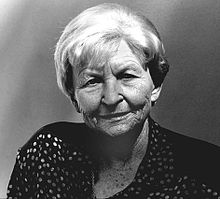 Marija Gimbutas (1921-1994) Even if Gimbutas had never written some of the most influential books on worship of the Goddess in the Neolithic Europe she might still be on this list. Born in Lithuania, Gimbutas emigrated to the United States in 1949, ending up at Harvard University. Gimbutas was a first-rate scholar of Indo-European civilization and oversaw many digs in Europe and the Middle East. In Pagan and Goddess circles she’s well known for a series of books on The Goddess in early European civilizations. The first of those The Goddesses and Gods of Old Europe (1974) had trouble finding an audience upon its initial release, but over the years drew a sizable readership and was highly influential in Goddess circles. Two later books expanded upon the ideas in Goddesses and Gods with both being bestsellers. Those two books, The Language of the Goddess (1989) and The Civilization of the Goddess (1991) are still influential today. Gimbutas had many critics in scholarly circles, but her work has a great deal of value and will continue to do so going forward.
Marija Gimbutas (1921-1994) Even if Gimbutas had never written some of the most influential books on worship of the Goddess in the Neolithic Europe she might still be on this list. Born in Lithuania, Gimbutas emigrated to the United States in 1949, ending up at Harvard University. Gimbutas was a first-rate scholar of Indo-European civilization and oversaw many digs in Europe and the Middle East. In Pagan and Goddess circles she’s well known for a series of books on The Goddess in early European civilizations. The first of those The Goddesses and Gods of Old Europe (1974) had trouble finding an audience upon its initial release, but over the years drew a sizable readership and was highly influential in Goddess circles. Two later books expanded upon the ideas in Goddesses and Gods with both being bestsellers. Those two books, The Language of the Goddess (1989) and The Civilization of the Goddess (1991) are still influential today. Gimbutas had many critics in scholarly circles, but her work has a great deal of value and will continue to do so going forward.
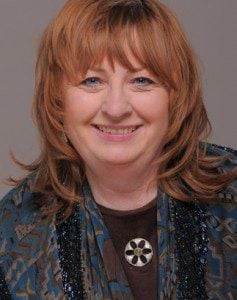 Patricia Monaghan (1946-2012) Patricia Monaghan had the rare ability to completely walk between the worlds. She was a Phd and taught at DePaul University’s School for New Learning, but while she worked in academia she also wrote for the rest of us. So many individuals with academic backgrounds have trouble overcoming institutional over-speak, not so with Monaghan. Her books on the Goddess were influential to many Pagans and Goddess seekers and when she founded The Association for the Study of Women and Mythology she made sure that it wasn’t just an academic society and included a place for the arts as well. In addition to being a writer Patricia was also a poet, artist, and activist. She was able to capture the many myths of The Goddess with a touch few are capable of. She died after a two year battle with cancer and is very much missed.
Patricia Monaghan (1946-2012) Patricia Monaghan had the rare ability to completely walk between the worlds. She was a Phd and taught at DePaul University’s School for New Learning, but while she worked in academia she also wrote for the rest of us. So many individuals with academic backgrounds have trouble overcoming institutional over-speak, not so with Monaghan. Her books on the Goddess were influential to many Pagans and Goddess seekers and when she founded The Association for the Study of Women and Mythology she made sure that it wasn’t just an academic society and included a place for the arts as well. In addition to being a writer Patricia was also a poet, artist, and activist. She was able to capture the many myths of The Goddess with a touch few are capable of. She died after a two year battle with cancer and is very much missed.
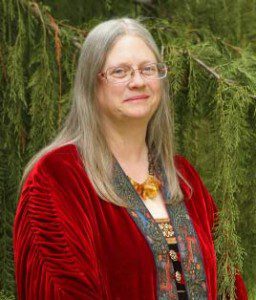 Anne Newkirk Niven For many decades magazines served as the “Pagan internet.” It was where ideas were exchanged, new writers were discovered, and news was shared. Over the last twenty-five years SageWoman magazine has occupied an honored space among periodicals dedicated to the Goddess and Goddess Worship. For much of that time Anne Newkirk Niven has served as SageWoman’s guiding light, acting as editor and publisher, and bringing the light of the Lady to thousands of subscribers around the world. Anne also edits and publishes Witches and Pagans magazine and in 2008 began publishing Crone: Women Coming of Age magazine. The digital age has changed Pagan publishing and Anne’s mission has changed with it. In addition to the print and digital versions of her magazines she also runs Pagan Square, perhaps the largest provider of Pagan content on the internet.
Anne Newkirk Niven For many decades magazines served as the “Pagan internet.” It was where ideas were exchanged, new writers were discovered, and news was shared. Over the last twenty-five years SageWoman magazine has occupied an honored space among periodicals dedicated to the Goddess and Goddess Worship. For much of that time Anne Newkirk Niven has served as SageWoman’s guiding light, acting as editor and publisher, and bringing the light of the Lady to thousands of subscribers around the world. Anne also edits and publishes Witches and Pagans magazine and in 2008 began publishing Crone: Women Coming of Age magazine. The digital age has changed Pagan publishing and Anne’s mission has changed with it. In addition to the print and digital versions of her magazines she also runs Pagan Square, perhaps the largest provider of Pagan content on the internet.
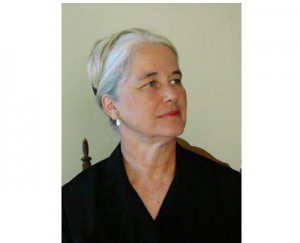 Margaret Starbird At the height of the Alternative-Da Vinci Code-Jesus-Era I began reading Margaret Starbird’s The Goddess in the Gospels and found it to be an enlightening experience. I know that “Christo-Pagan” is a touchy subject in today’s Pagan Community but there’s no denying that Jesus and Christianity are certainly improved upon when She is added to the equation. Hopefully we will reach a place in history where The Goddess isn’t exclusive to Pagan religions and/or de-feminized and stripped of her sexuality like she often is in the Catholic Church. When that day comes it will be because of writers like Margaret Starbird who put The Goddess in the gospels and turned Mary Magdalene into a respected figure in the Christian Pantheon. Before Goddess Starbird authored The Woman with the Alabaster Jar a fascinating look at the Divine Feminine in the male-dominated West. I had reservations about including Starbird on this list, but I can’t help but think that Starbird’s books have helped numerous women and men find the Goddess, even if that path was a little different than my own.
Margaret Starbird At the height of the Alternative-Da Vinci Code-Jesus-Era I began reading Margaret Starbird’s The Goddess in the Gospels and found it to be an enlightening experience. I know that “Christo-Pagan” is a touchy subject in today’s Pagan Community but there’s no denying that Jesus and Christianity are certainly improved upon when She is added to the equation. Hopefully we will reach a place in history where The Goddess isn’t exclusive to Pagan religions and/or de-feminized and stripped of her sexuality like she often is in the Catholic Church. When that day comes it will be because of writers like Margaret Starbird who put The Goddess in the gospels and turned Mary Magdalene into a respected figure in the Christian Pantheon. Before Goddess Starbird authored The Woman with the Alabaster Jar a fascinating look at the Divine Feminine in the male-dominated West. I had reservations about including Starbird on this list, but I can’t help but think that Starbird’s books have helped numerous women and men find the Goddess, even if that path was a little different than my own.
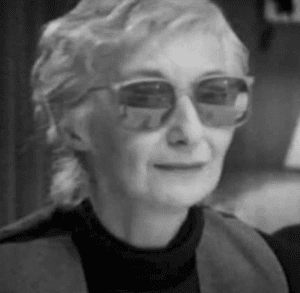 Merlin Stone (1931-2011) The idea of an ancient matriarchal culture worshipping a universal Great Goddess was not new in 1976 when Stone released The Paradise Papers: The Suppression of Women’s Rites (better known as When God Was a Woman, the title was changed in 1978) but it had never been so beautifully articulated before. Stone introduced generations of women (and men) to the idea of the Great Goddess and in the process she revealed a mythological past with a great deal of power in the present. When God Was a Woman was a game-changing book, and Stone’s name deserves to be said in the same breath as writers like Graves and Murray. Stone helped to shape many of the ideas and philosophies which are now a common part of Goddess Spirituality and Modern Paganism as a whole.
Merlin Stone (1931-2011) The idea of an ancient matriarchal culture worshipping a universal Great Goddess was not new in 1976 when Stone released The Paradise Papers: The Suppression of Women’s Rites (better known as When God Was a Woman, the title was changed in 1978) but it had never been so beautifully articulated before. Stone introduced generations of women (and men) to the idea of the Great Goddess and in the process she revealed a mythological past with a great deal of power in the present. When God Was a Woman was a game-changing book, and Stone’s name deserves to be said in the same breath as writers like Graves and Murray. Stone helped to shape many of the ideas and philosophies which are now a common part of Goddess Spirituality and Modern Paganism as a whole.
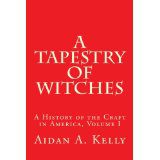 Ursa Maior Circle I recently finished A Tapestry of Witches by Aidan Kelly and enjoyed a lot of the history in its pages. One of the most intriguing bits in the book dealt with the Ursa Maior circle (which he labeled a circle and not a coven, apologies to those involved if that wasn’t the case), a women only ritual group that met from 1973 to 1977. Ursa Maior was one of the first Pagan groups in the (San Francisco) Bay Area dedicated to one gender. There’s a part of me still in shock that it took so long. In 1974 the group led a ritual for over 150 people at the Women’s Spirituality Festival in Oregon, an impressive achievement by any measure. They were also instrumental in the founding of The Covenant of the Goddess, signing the initial document that directly to the creation of CoG. The circle may have opened in 1977, but it was never broken as their accomplishments and legacy live on.
Ursa Maior Circle I recently finished A Tapestry of Witches by Aidan Kelly and enjoyed a lot of the history in its pages. One of the most intriguing bits in the book dealt with the Ursa Maior circle (which he labeled a circle and not a coven, apologies to those involved if that wasn’t the case), a women only ritual group that met from 1973 to 1977. Ursa Maior was one of the first Pagan groups in the (San Francisco) Bay Area dedicated to one gender. There’s a part of me still in shock that it took so long. In 1974 the group led a ritual for over 150 people at the Women’s Spirituality Festival in Oregon, an impressive achievement by any measure. They were also instrumental in the founding of The Covenant of the Goddess, signing the initial document that directly to the creation of CoG. The circle may have opened in 1977, but it was never broken as their accomplishments and legacy live on.
Now that you’ve read this list go read The Thirteen Most Influential People in Goddess Spirituality over on the WoodsPriestess blog. There’s some overlap, but mostly names not on this list. Read the comments too! Even more people worth knowing about.
*Starhawk is not on this list because she’s in my “Top 5” most influential Pagans ever list.




